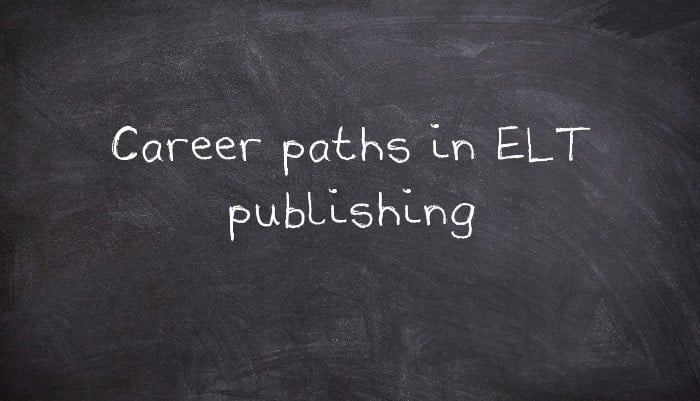One of the biggest frustrations I hear from TEFL teachers is that there is no clear career progression in our profession, especially for those who do not want management jobs. There is an even louder clamour from those who want to break into writing for English language teachers and students, as there aren’t even the few clear options like “CELTA leads to DELTA leads to MA leads to university job” or “one year of experience leads to International House leads to British Council” that teaching can sometimes offer. Although the way most people who now get published regularly originally broke into the business are as varied as the teaching careers of the vast majority of teachers who did not follow the two ladders I described above, I hope giving a couple of simplified examples can persuade more people that it is a ladder worth starting on, and one that can provide satisfaction on every rung even to those who don’t make it all the way to the top.
Example One- The Article Man
1. Read forums for teachers and get an idea of what teachers are interested in
2. Start answering people’s questions on those forums.
3. Read teaching blogs and do the same
4. Offer to write a guest piece for one of the blogs
5. Start your own blog, where you can expand on the kinds of matters you have been reading and writing about
6. Start reading articles about teaching, on websites and in print publications
7. Write a short practical article about teaching ideas for a general teaching site that encourages submissions such as TEFL.net or Usingenglish.com, perhaps as a neater version of something that was a popular topic on your blog
8. Write a longer, more detailed article for a site like www.developingteachers.com or www.hltmag.co.uk
9. Write a more academic article for TESL-EJ etc.
10. Whenever you have found which of those kinds of articles you have most interest in, start writing articles of one or more of those types for print publications like English Teaching Professional magazine (ETP) or Modern English Teacher magazine (MET). Make sure you read the submission guidelines and some recent examples of recent articles in the magazine carefully before you start writing, because the use of physical space on the page means that they have to be more fussy about word counts etc. that online publications.
11. Offer your services in other ways to the places you have been writing for, e.g. editing one of the sections or a setting up new section you think is needed, getting involved in peer review of articles, moderating forums, writing an advice column, writing book reviews etc.
12. Hopefully by this point (maybe two to four years from step one?), someone would have noticed your writing and commissioned you to write something for them. If not, you might want to think about writing something that has a bit more impact or is a bit more cutting edge. The most likely first approaches are to do a little job for the big publishers, e.g. writing workbook exercises. At this point, your main aim is to prove that you are reliable, punctual and low maintenance.
13. Now that you have a nice ELT publishing CV, start shamelessly selling your services to more mass market and/ or commercial publications like the EL Gazette, the Guardian Education TEFL section or the various websites of the publishers, e.g. the website of a textbook that you are using. Ways to get their attention include giving them feedback on something they have published and suggesting how you could help them improve it, writing reviews of something they have published and then sending them a copy of the review, or sending them proposals for things you think could be included and you could write or edit. Include your CV each time, along with maybe a sample of something similar you have already published, and repeat every 6 months or so. Try a different email address/ postal address/ department each time, but do not CC lots of people into the same message. Some time finding out who you should contact before sending anything could be very useful for this stage.
14. Every time you do get commissioned for work, publicise whatever you have written as much as you can (e.g. on TEFL blogs) and make sure people know you are available to write more of the same.
15. Rinse and repeat.
16. You might now be earning enough from writing to only need to work part time as a teacher, but are very unlikely to be able to live just off ELT writing yet.
17. If your aim is to get a full time job at a publishers, you should have been sending your CV to every job advertisement you see since step 1 above. Hopefully a year or two into step 15 your CV should reach the standard of what they are looking for, but actually you could get lucky at any time. A combination of youth, qualifications and experience seems to be what the publishers are looking for on CVs, so get your wrinkle cream ready. Otherwise, you might be able to string enough writing work together to go freelance whenever a big job comes in, or your great CV should help you get a university job where you have plenty of time to both write and teach.
As publishers need people who can write lesson plans, check grammar exercises, collate answer keys, simplify business reading texts, give workshops on their materials etc. at least as much if not more than they need people who can write articles and books for teachers, this is obviously not the whole picture. Possible career paths for those other strands coming up, which you can then weave together to make your own plan of action.
Career paths in ELT publishing

How an ESL teacher can get into publishing